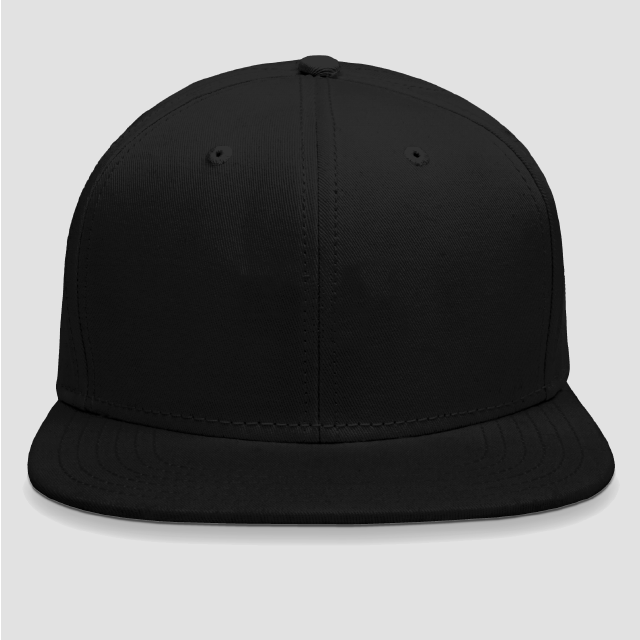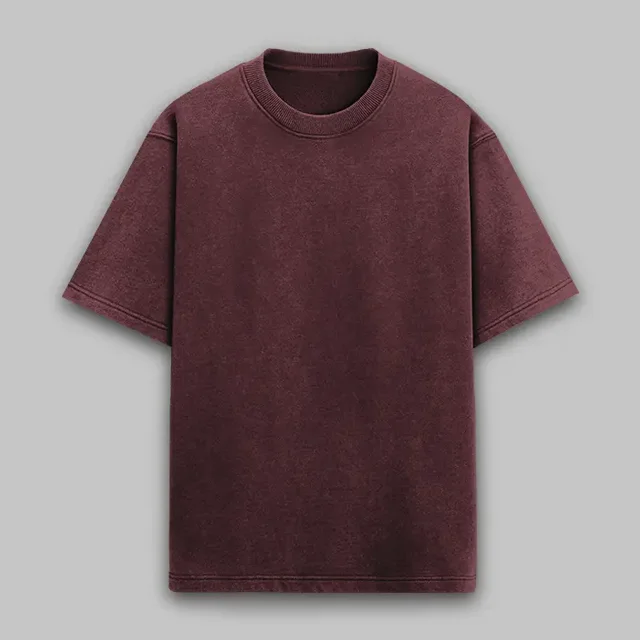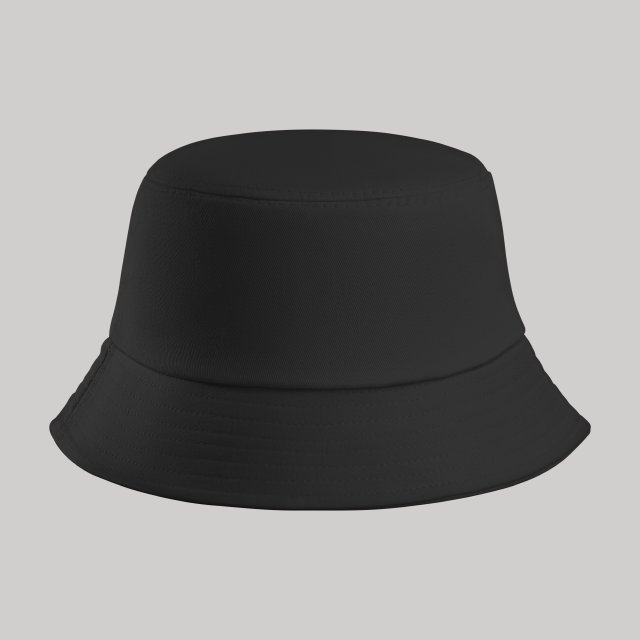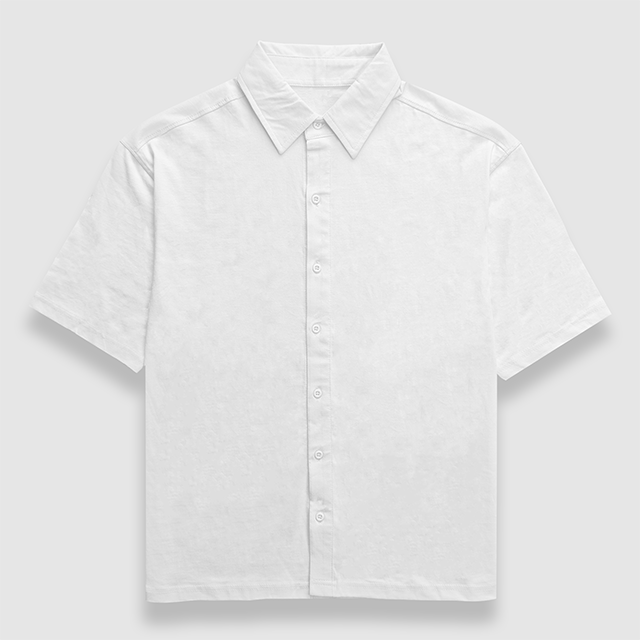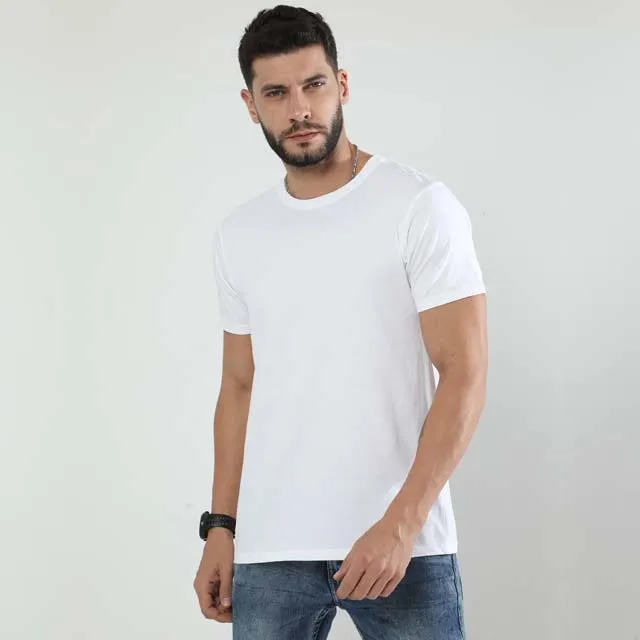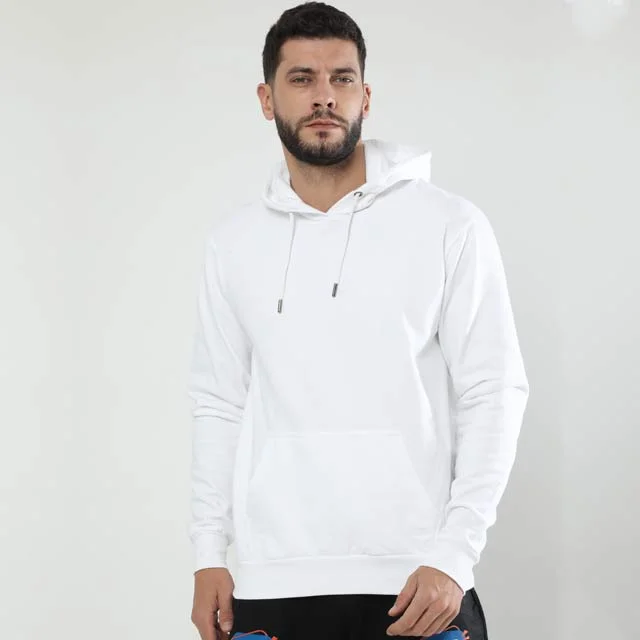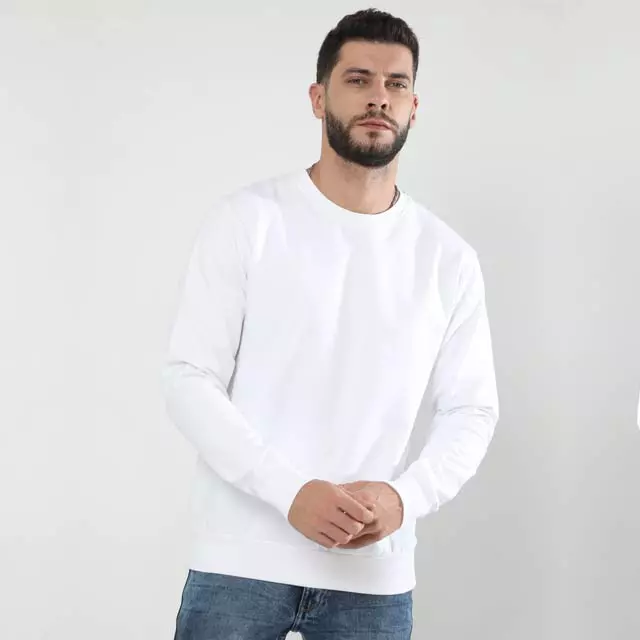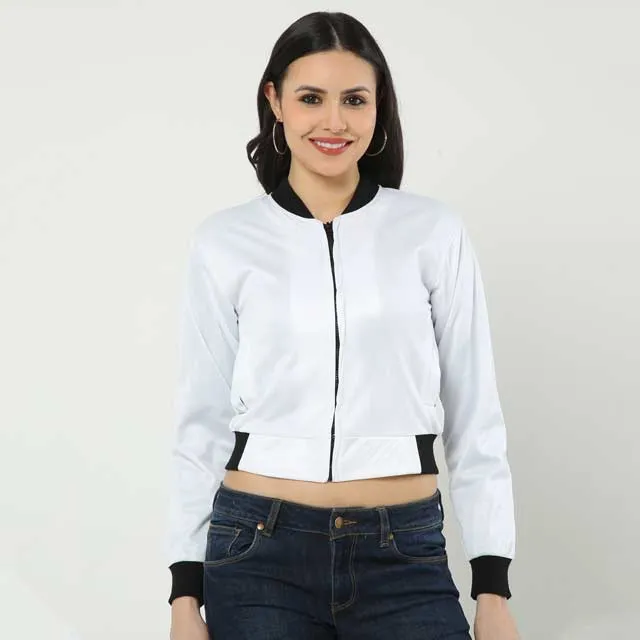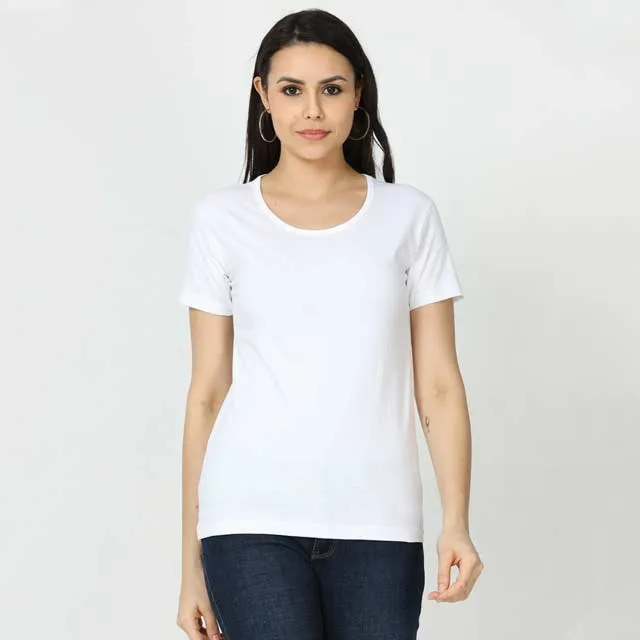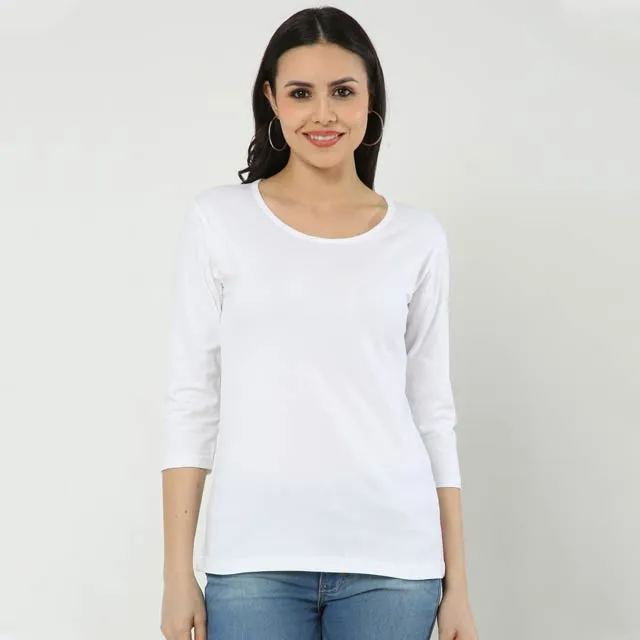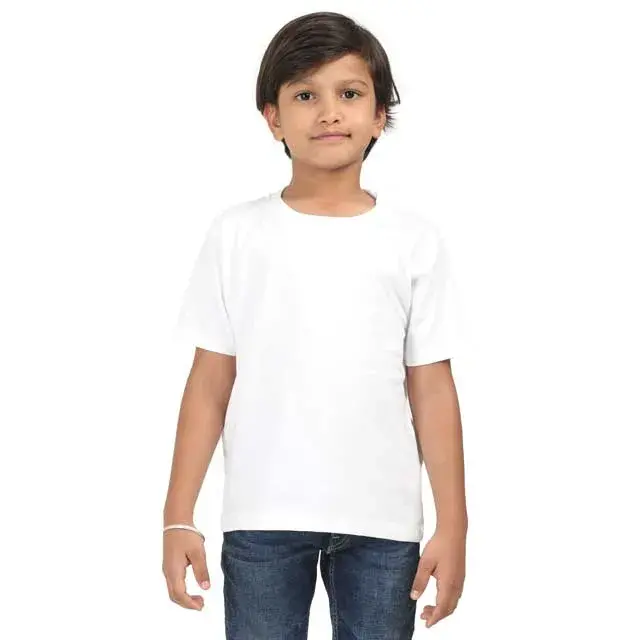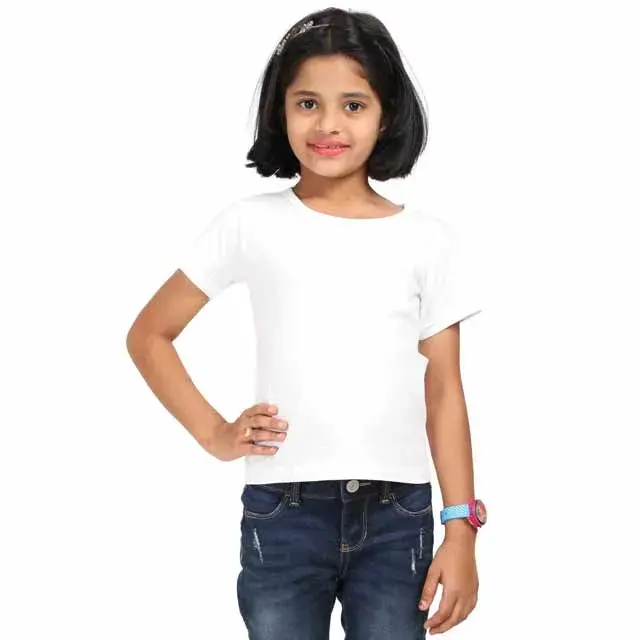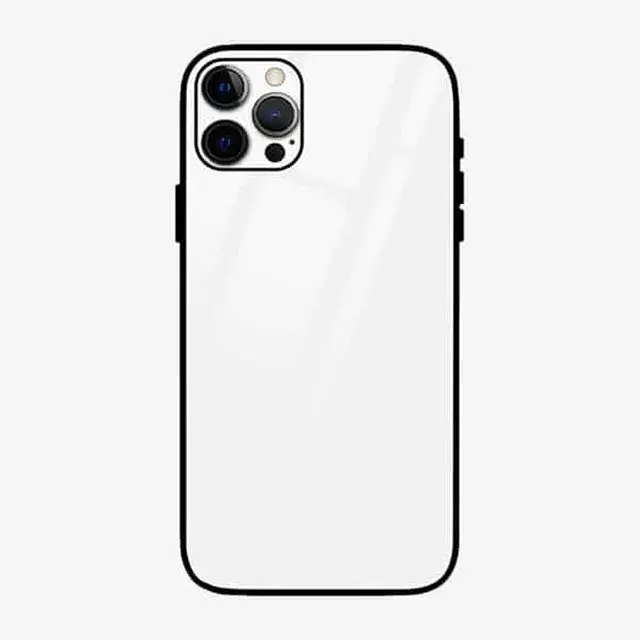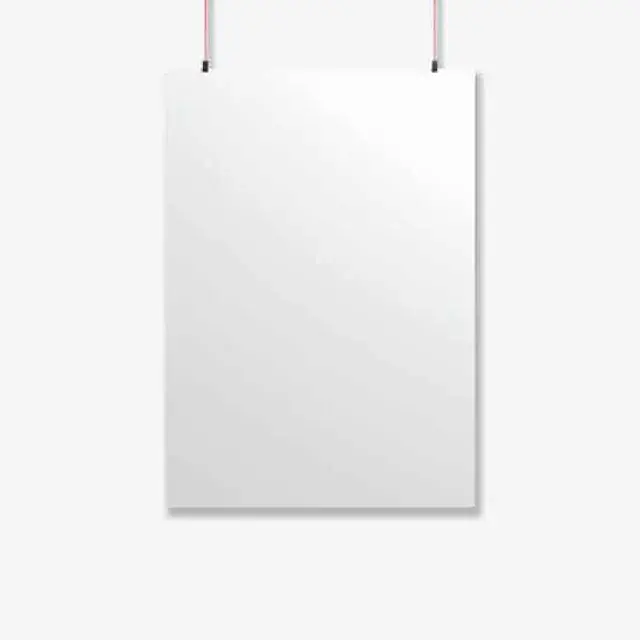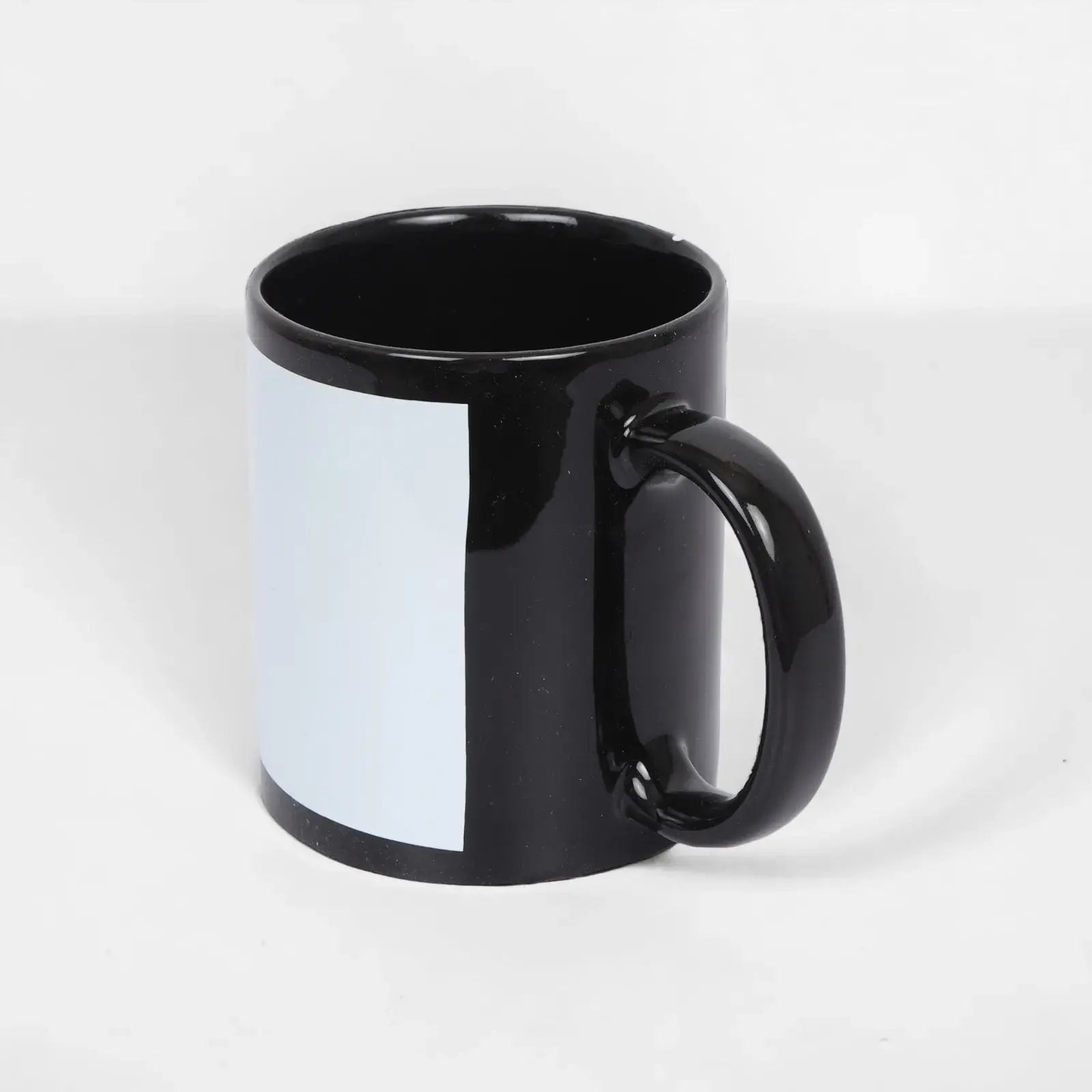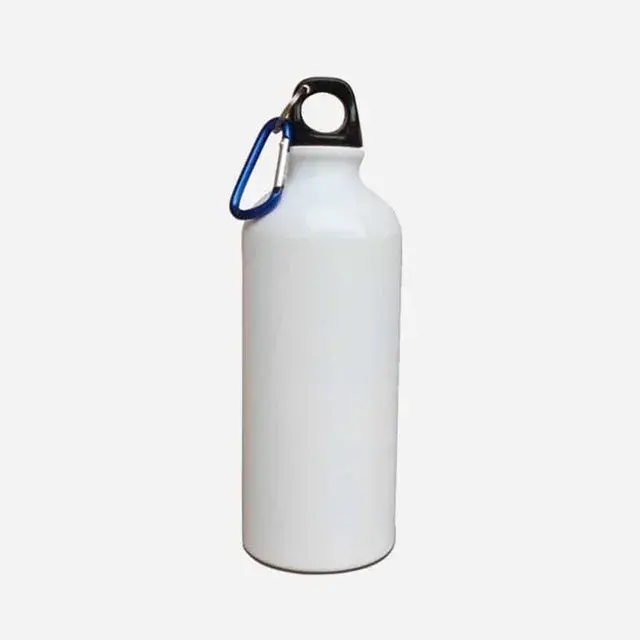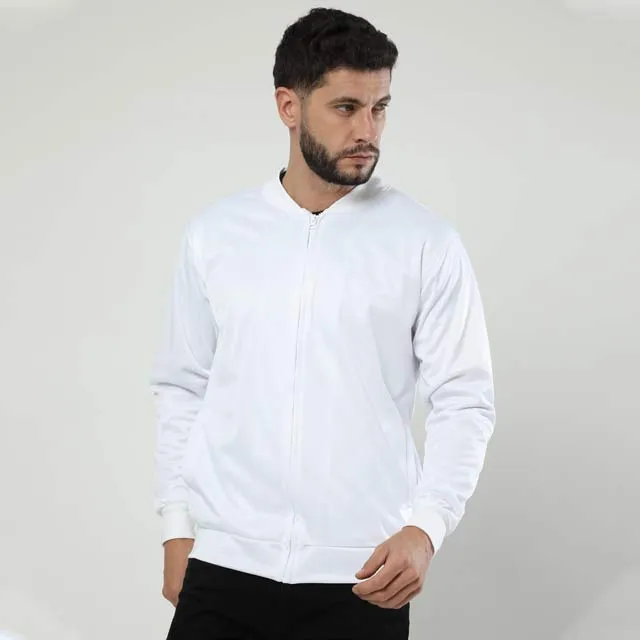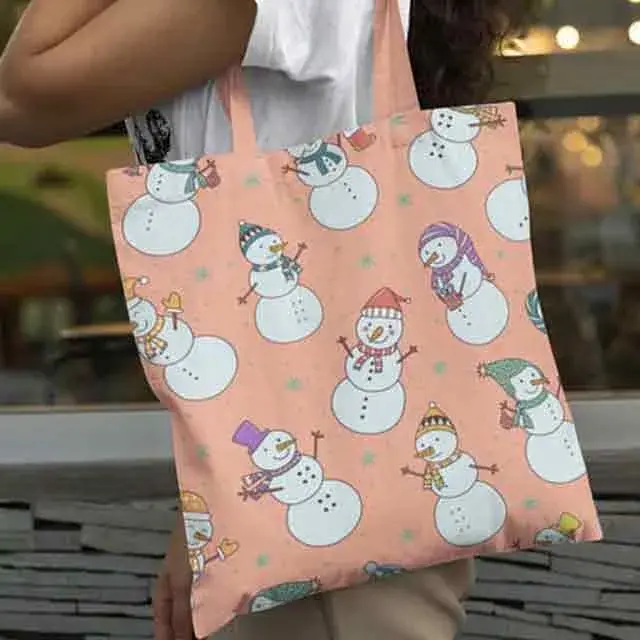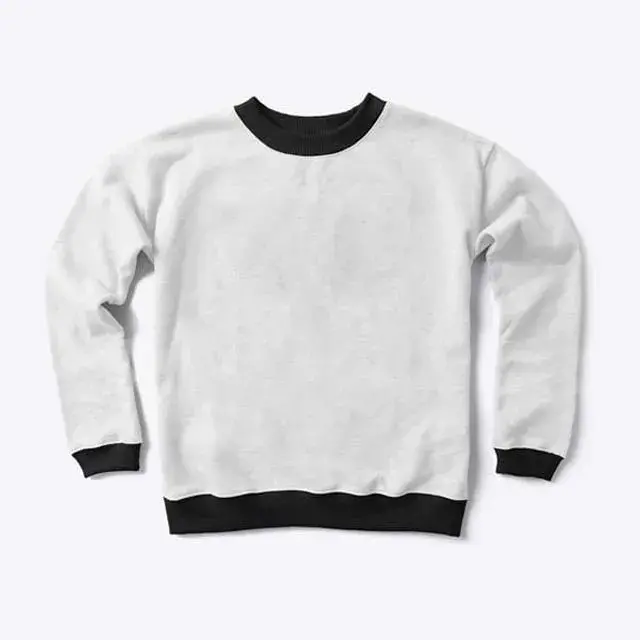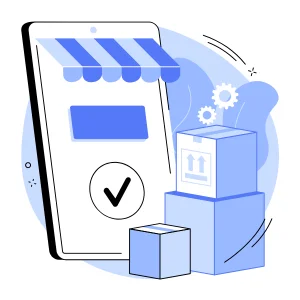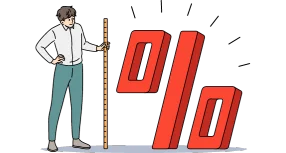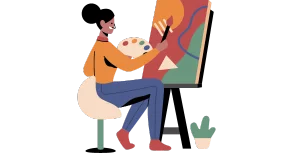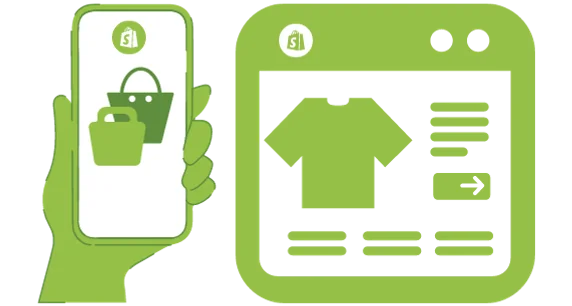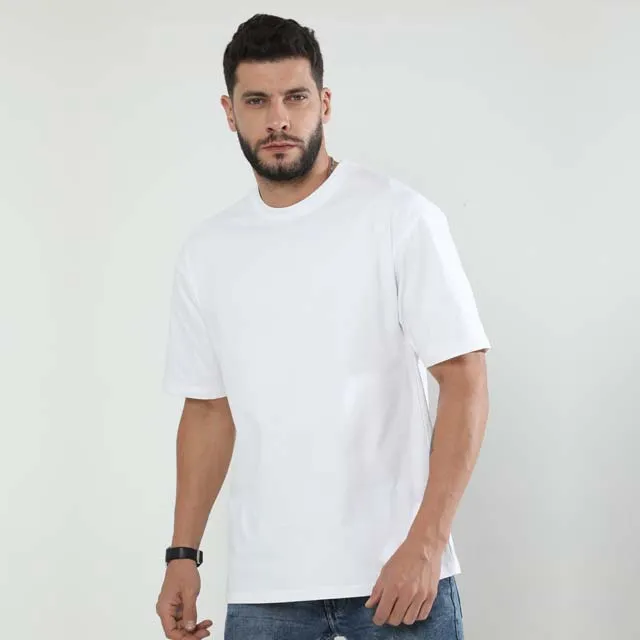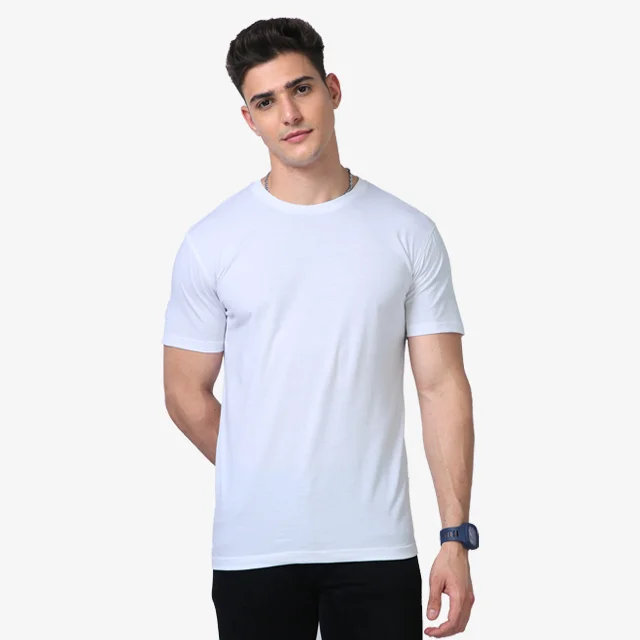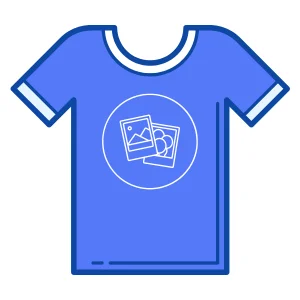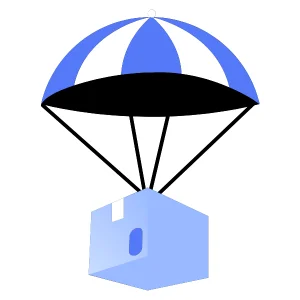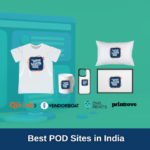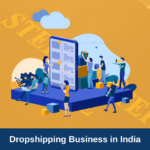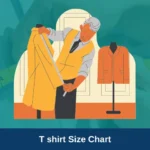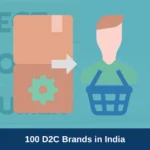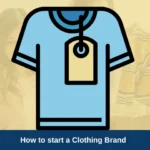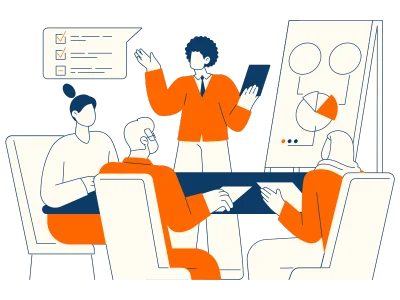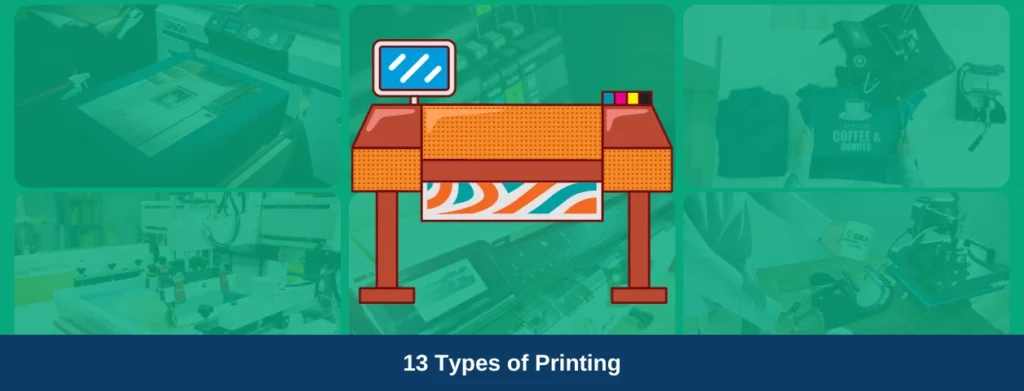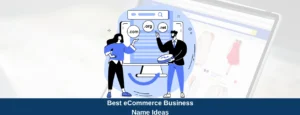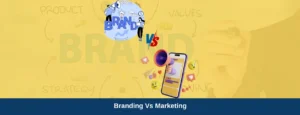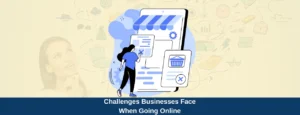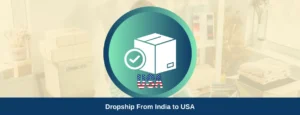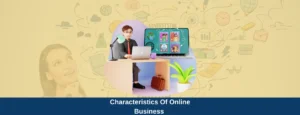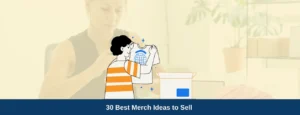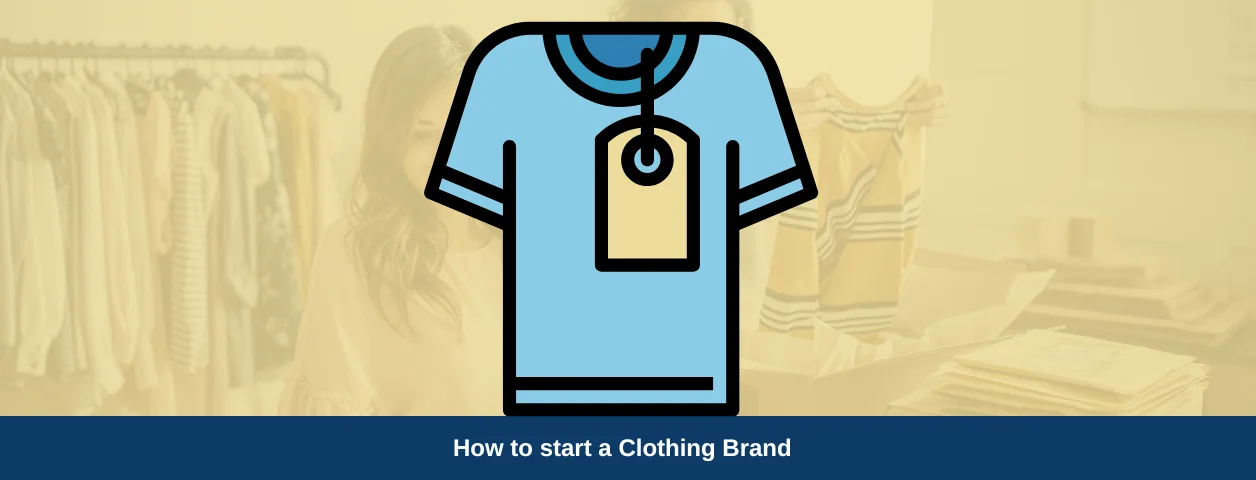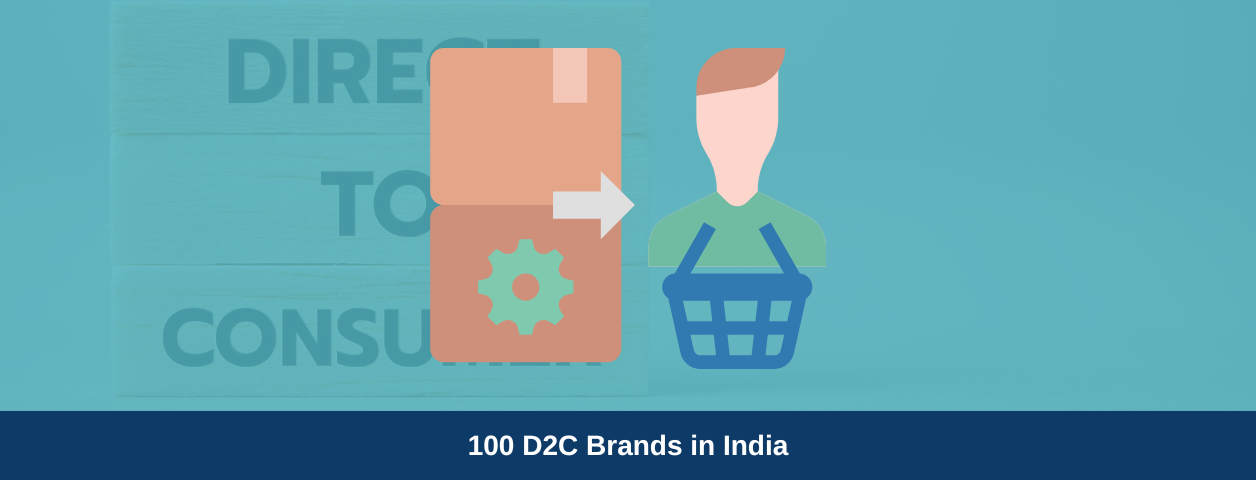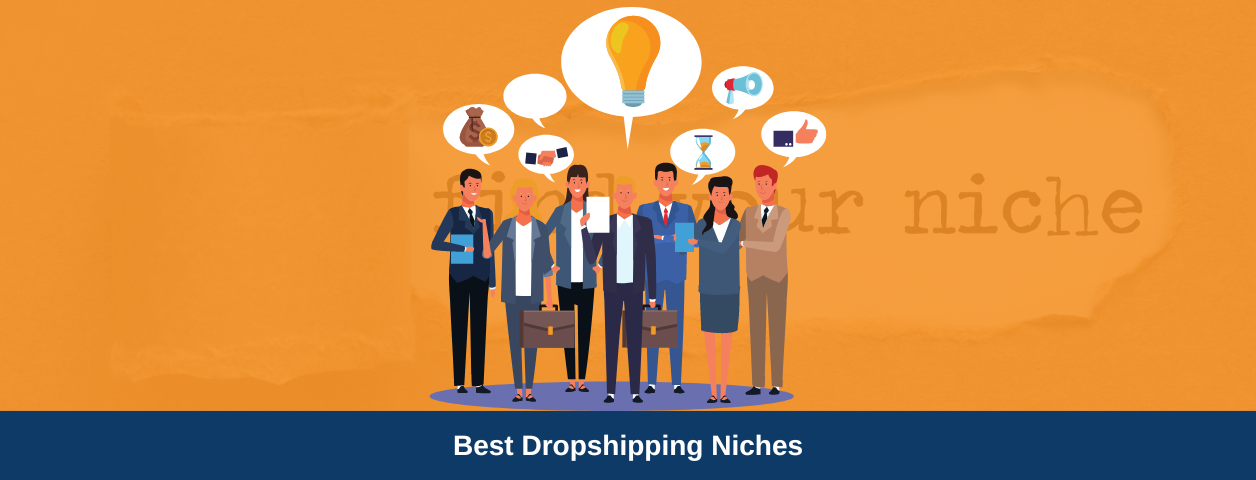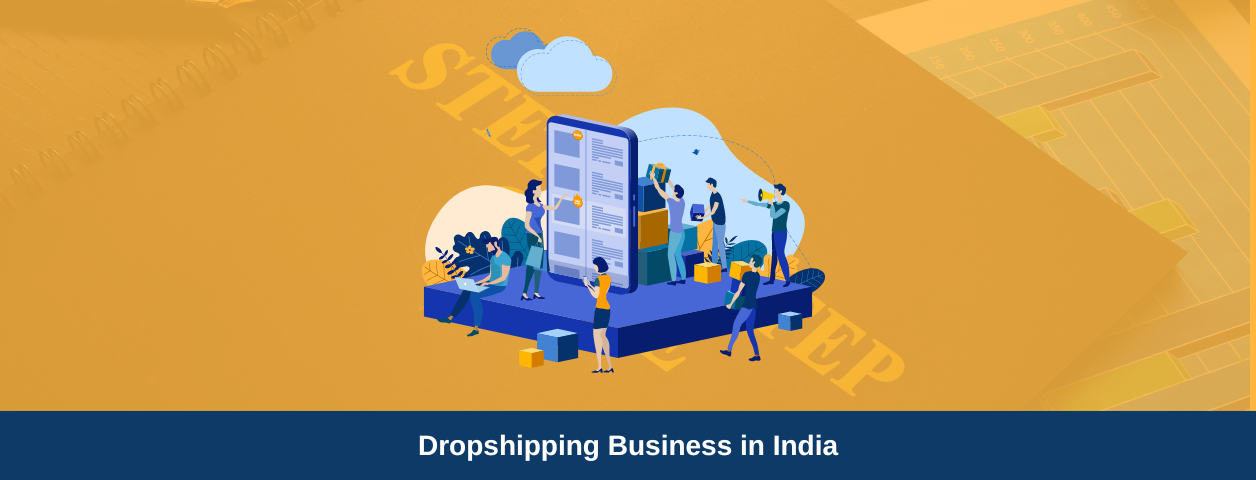1. Direct to Garment Printing (DTG)
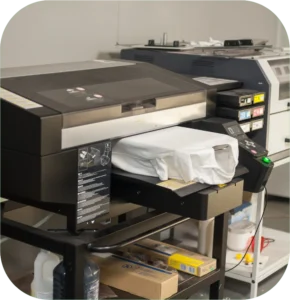
In contrast to traditional printing procedures, DTG enables the direct printing of complex designs, gradients, and brilliant colours onto different fabrics, resulting in a soft and flexible feel.
Most suitable for
DTG printing is best suited for intricate patterns with several colors, gradients, and fine details. It’s ideal for small to medium-sized production runs, personalized products, and one-of-a-kind printing. It allows you to print graphics on various textiles, including cotton, combed cotton, organic cotton, linen, light-colored polyester and blends.
Pros
- High-quality prints: DTG printing enables accurate, intricate graphics with brilliant colours and smooth gradients.
- Versatile and customisable: Print a wide range of designs, including elaborate artwork, pictures, and personalised features, making it ideal for one-of-a-kind and customised clothes.
- Eco-friendly: This process uses water-based inks, which are more environmentally friendly.
Cons
- Limited colour vibrancy on dark fabrics: Ink absorbs differently on dark fabrics, and DTG printing may struggle to achieve brilliant colours.
- Print size limitations: DTG printing is normally better suited for smaller-sized prints.
- Higher cost per print: Due to ink consumption and longer print times, DTG printing might be more expensive per unit than other printing processes for big production runs.
- Limited fabric compatibility: While DTG can print on various fabrics, certain synthetic materials may not be suitable due to their low absorbency or heat sensitivity.
Printing cost
Minimum printing charges are Rs. 100 (excluding product cost, tax and shipping)
2. Direct to Fim Printing (DTF)
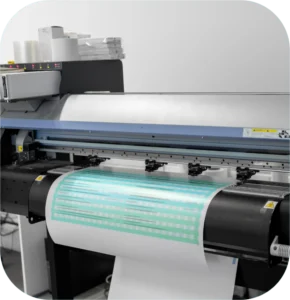
The pattern is first printed onto a thin, flexible film, then attached to the material with a heat press. Heat activates the adhesive on the film, causing it to bond to the cloth and produce a long-lasting and brilliant print.
Most suitable for
DTF printing is well-suited for printing dark-coloured textiles and low-absorbency materials such as polyester, nylon, and synthetic blends. It produces good effects on light and dark fabrics. It is best for intricate and bright graphics with various colours.
Pros
- Vibrant and durable prints: DTF printing produces high-quality, long-lasting prints with vibrant colours and fine details.
- Versatility on different fabrics: It may be used on various materials, including cotton, polyester, nylon, and synthetic mixes.
- Suitable for dark fabrics: It excels at printing on dark fabrics due to its high colour vibrancy and opacity.
- Cost-effective for small runs: It is a cost-effective alternative for small to medium-sized print runs.
Cons
- Texture and feel: The film’s adhesive layer can lend a little raised texture to the printed pattern, which may impact the fabric’s feel.
- Environmental concerns: Some DTF printing techniques entail using solvents or chemicals for film printing or fabric pre-treatment. These compounds may have environmental consequences if not handled, disposed of, or controlled correctly.
Printing cost
Minimum printing charges are Rs. 100 (excluding product cost, tax and shipping)
3. Screen Printing or Silk Screen Printing
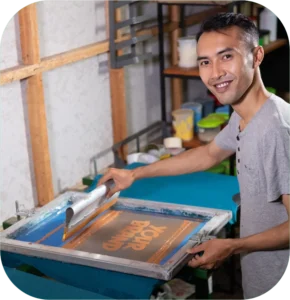
It is a flexible and long-lasting printing technology capable of producing high-quality, long-lasting prints.
Most suitable for
Screen printing is best suited to create strong and bright graphics on fabrics, garments, posters, signage, and promotional goods. It works especially well for big production runs of the same design and printing on flat or slightly curved surfaces.
Pros
- Durability and longevity: Screen-printed patterns are noted for their durability and resistance to fading, making them excellent for products that will be used or washed frequently.
- Vibrant colours: Screen printing creates brilliant and opaque colours, especially on darker materials, resulting in outstanding colour saturation.
- Versatility: It may be used on various materials, including textiles, paper, plastics, and metals, allowing for a wide range of printing options.
- Cost-effective for large runs: Screen printing becomes more cost-effective for bigger production numbers because the initial setup expenses may be distributed across more prints.
- Thick ink layers: It enables the application of thicker ink layers, resulting in a tactile, textured finish that gives dimension to the printed pattern.
Cons
- Limited detail and resolution: Compared to other printing methods, screen printing may have limitations when reproducing fine details, intricate patterns, or designs with gradients or subtle colour variations.
- High setup time and cost: Because setting up screens for each colour in the design may be time-consuming and expensive, screen printing could be better for small quantities or single-item prints.
- Not suitable for complex designs: Screen printing may not be ideal for extremely intricate or complicated designs that demand high precision or photorealistic results.
Printing cost
Printing cost depends on the number of colours and quantity.
4. Sublimation Printing
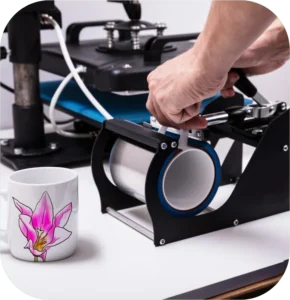
The pattern is printed onto transfer paper with sublimation inks, and then heat is applied to the paper, causing the inks to vaporise and permeate the fabric. This method produces brilliant, long-lasting designs woven into the cloth rather than being applied on top of it.
Most suitable for
Dye Sublimation is suitable for various products, from apparel to accessories and on any polyester fabric. A special coating is necessary to print on accessories like coffee mugs, key chains etc.
It works especially effectively on white or light-coloured textiles since the sublimation inks are transparent and rely on the backdrop colour for the final look.
Pros
- Vibrant and long-lasting prints: It produces vibrant, full-colour prints that are fade-resistant and long-lasting. The prints are not readily cracked, peeled, or washed away, assuring the design’s endurance.
- Seamless design integration: Design integration is seamless since sublimation prints become a part of the fabric, resulting in a soft and smooth finish with no texture or extra layers.
- Excellent colour accuracy and detail: Sublimation printing produces high-resolution prints with intricate elements, gradients, and photographic reproductions, capturing the design with incredible precision.
- Breathable and comfortable: Because the inks do not affect the inherent qualities of the material, sublimation prints keep the fabric’s breathability and softness.
Cons
- Limited fabric compatibility: Sublimation printing works best on polyester-based textiles or materials coated with polyester. It is not appropriate for natural fibres.
- Light-coloured backgrounds required: Because sublimation inks are transparent, the cloth’s background colour significantly impacts the final look of the print. Dark-coloured or patterned materials may reduce the intensity and clarity of the design’s colours.
- Higher cost for small runs: Because it needs specialised equipment and consumables, such as sublimation inks and transfer sheets, sublimation printing may be less cost-effective for small numbers or one-off prints.
Printing cost
Sublimation mugs will cost approximately Rs. 125 – 400, depending on the mug type.
5. All-Over T-Shirt Printing
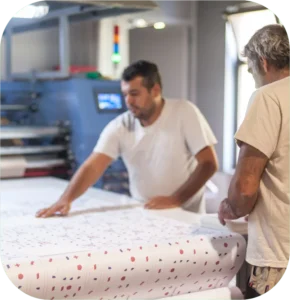
This technique allows for colourful, complex graphics to be flawlessly stretched from edge to edge throughout the cloth surface.
Most suitable for
All-over printing is most suitable when a dramatic, eye-catching pattern that covers the full garment or fabric surface is needed. It’s often used for clothing, including t-shirts, hoodies, vests, and leggings, as well as different accessories and household textiles. This printing process is appropriate for bright and dark-coloured materials and offers a high level of personalisation and creative freedom.
Pros
- Maximum design impact: All-over printing creates visually appealing clothes by smoothly extending the image across the full fabric surface, maximising the impact and producing a distinct, eye-catching look.
- Creative possibilities: This approach enables elaborate and detailed designs, including huge graphics, patterns, and even photographic pictures, giving designers and artists virtually endless creative options.
- High-quality and long-lasting prints: Produces brilliant images that resist several washes and retain their colour intensity over time.
- Versatility: All-over printing may be applied to various textiles, including cotton, polyester, mixes, and certain synthetic materials, allowing for greater versatility in garment selection and design applications.
Cons
- Higher production costs: Because all-over printing involves specialised equipment and techniques, manufacturing costs might be higher.
- Complex production process: All-over printing manufacturing is more sophisticated and time-consuming than typical printing procedures, requiring perfect registration and pattern alignment across several fabric panels.
- Design limitations: Due to the particular construction of clothing and the printing process, pattern placement and distortion near seams, collars, or other garment characteristics may be limited.
Printing cost
All over printed t-shirts price is Rs. 400 (exclusive shipping and tax)
Qikink uses all-over printing to print hoodies, sweatshirts, bomber jackets, vests, crop tops, sports bras, leggings etc.
6. UV Printing
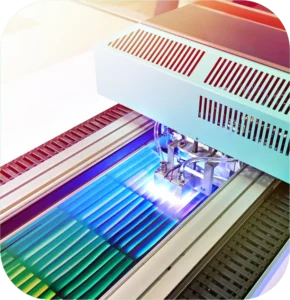
The prints are very high definition and costlier than sublimation or screen printing.
Most suitable for
UV Printing is most suitable for paper, plastic, glass, or metal materials. The ink rapidly transforms from liquid to solid when exposed to UV light. The possibilities include embossed printing, layered printing, and printing on bendable substrates like silicon and fabrics.
Pros
- Vibrant and high-quality prints: UV printing produces images with remarkable colour vibrancy, clarity, and fine details, resulting in aesthetically attractive prints.
- Enhanced durability: UV-cured inks provide prints resistant to fading, water damage, and abrasion, providing longevity and durability.
- Versatility: UV printing is compatible with many materials, including paper, plastic, glass, and metal, allowing greater versatility in printing applications.
- Instant drying: UV light exposure cures the ink quickly, allowing instant handling, decreasing manufacturing time, and enhancing efficiency.
- Environmentally friendly: UV printing uses inks devoid of toxic VOCs, resulting in a more environmentally friendly printing process.
Cons
- Higher cost: UV printing may need a larger initial investment owing to specialised equipment and inks, making it more expensive than regular printing processes.
- Glossy finish: UV prints have a glossy look because the ink sits on the surface rather than being absorbed, which may not be acceptable for all design choices or purposes.
Printing cost
The fridge magnet with printing and shipping costs Rs. 142.6.
7. Eco-Solvent Printing
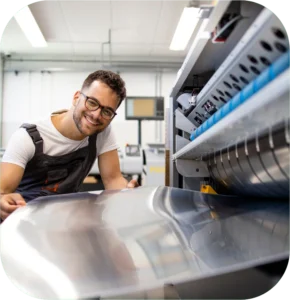
Uncoated garments can use eco-solvent printing; the major advantage of this printing is minimal waste. The process is costlier when compared to solvent ink printing.
Qikink uses Mimaki Eco Solvent Printers to print die-cut stickers and canvas products.
Most suitable for
Eco-solvent printing is best suited for outdoor applications that require durability and weather resistance. It is appropriate for various materials, including vinyl, canvas, cloth, and several paper types.
Pros
- Environmental friendliness: Compared to typical solvent inks, eco-solvent inks have reduced VOC content, minimising the impact on air quality and making them a more eco-friendly solution.
- Durability and outdoor resistance: Eco-solvent prints resist fading, water, and UV exposure, ensuring that images retain their quality and colour vibrancy even under tough outside situations.
- Versatility: Eco-solvent printing is versatile since it can be used on various materials, including flexible and rigid substrates, allowing for multiple applications such as stickers, canvas, decals, and more.
- High print quality: Eco-solvent printing yields bright, colourful prints with high colour saturation, enabling elaborate patterns, fine details, and smooth gradients.
Cons
- Longer drying time: Compared to other printing processes, eco-solvent inks require a longer drying time, which might influence manufacturing turnaround time.
- Limited compatibility with certain materials: While eco-solvent printing may be used on various materials, it may not be appropriate for very porous or heat-sensitive substrates.
8. Digital Paper Printing
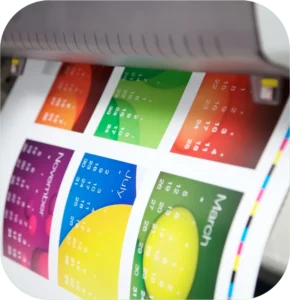
Qikink uses digital paper printers to print posters, thank you cards, custom letters, framed posters etc.
Most suitable for
Digital paper printing is frequently used for small to medium print runs or when rapid turnaround times are necessary. It is a flexible printing technology with various paper sizes, weights, and finishes.
It produces printed goods quickly and efficiently, making it suited for multiple applications such as brochures, flyers, business cards, and papers.
Pros
- Fast and efficient production: Production is rapid and effective, making digital paper printing suitable for jobs with tight deadlines or last-minute printing demands.
- Cost-effective for small print runs: Digital printing is more cost effective for small print runs than traditional printing technologies such as offset printing because it removes the need for costly setup operations.
- Variable data printing: Because digital printing enables the easy incorporation of variable data, printed products may be customised with unique information for each piece.
- High-quality prints: Digital printers can generate crisp, detailed prints with perfect colour reproduction, resulting in printed items that seem professional.
- Design flexibility: Because digital printing supports a broad range of paper sizes, weights, and finishes, designers may choose the best paper to improve the aesthetic attractiveness of printed goods.
Cons
- Limited colour accuracy: While digital printing may produce high-quality prints, perfect colour matching can be difficult since colours may differ somewhat from the original digital source owing to printer calibration and paper properties.
- Limited suitability for speciality finishes: Some specialist finishes, such as metallic inks or embossing, may need to be more easily recreated by digital paper printing, restricting design choices for particular applications.
Printing cost
Depending on the size, a poster with printing and shipping costs Rs. 83.6 – 139.6.
9. Tie & Dye

It is an ancient art form practised in various civilisations worldwide. Fabric or natural dyes often have bright, contrasting designs on clothing or textiles.
Most suitable for
Tie and dye are best utilised for creating visually appealing and unique designs on materials. It’s most typically used on cotton, silk, rayon, and other natural fibres, although it may also be used on synthetic fabrics.
Tie and dye are used to create visually appealing garments, scarves, bed linens, and other textile goods.
Pros
- Creativity and individuality: Tie and dye allow for limitless creativity by enabling individuals to create unique patterns and colour combinations, resulting in one-of-a-kind creations.
- Low-cost materials: The materials needed for tie and dye, such as fabric, dye, and basic tying equipment, are often inexpensive and readily available, making it a cost-effective method of personalising textiles.
- Versatility: Tie and dye may be applied to various materials and clothing, providing a vast range of creative options.
- Craftsmanship and artistic expression: Tie and dyeing involve personal skill and accuracy, letting individuals express their creative talents and produce handmade, artisanal works.
Sustainable option: Tie & dye may be ecologically beneficial when natural dyes and eco-conscious dying procedures are used, making it a sustainable alternative.
Cons
- Unpredictable results: Obtaining desired patterns and colours in tie and dye can be difficult since the outcome is dependent on a variety of elements such as cloth type, dye concentration, tying techniques, and dye penetration.
- Time-consuming process: Tie and dye is a time-consuming procedure involving numerous phases such as cloth preparation, tying, dye application, and drying, which may require patience and time commitment.
- Limited design precision: Tie and dye, unlike other printing technologies, does not allow for accurate, elaborate designs or crisp lines since it is based on the physical manipulation of cloth and dye application.
10. Vinyl Printing
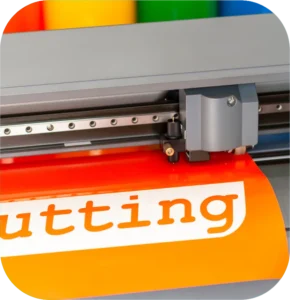
Vinyl printing is also used for apparel. Vinyl is a PVC material available in various colours and shades.
It can be cut in custom shaped and applied onto the T-Shirts using a heat press. Unlike Sublimation transfer, the image on the transfer sheet is transferred to fabric; the vinyl is pasted on top of the garment.
Most suitable for
Vinyl printing is most suitable for long-lasting, high-quality prints with bold designs. Vinyl printing for T-Shirts is the cheapest available form of printing one-off pieces. This is widely used in printing numbers on the back side of sports jerseys.
There is printable vinyl, which can be printed using inkjet. The inverted, printed layer can be applied using a transparent transfer sheet onto T-Shirts using a heat press.
Pros
- Durability: Vinyl prints are extremely durable and resistant to fading, weathering, and abrasion, guaranteeing that they retain their beauty over time, even under harsh outdoor situations.
- Vibrant colours: Vinyl printing provides high colour saturation, enabling brilliant, attention-grabbing images.
- Versatility: Vinyl prints may be applied to various surfaces, including flat, curved, and textured, allowing for greater creative flexibility.
- Easy installation and removal: Vinyl prints are simple to place and remove, thanks to adhesive backing or heat activation methods. They can also be removed without causing harm or leaving residue on the surface.
- Customisation: Vinyl printing provides for customisation and personalisation, with variable data printing choices for names, numbers, and other unique characteristics.
Cons
- Limited colour range: While vinyl printing produces brilliant colours, it may reach a different colour accuracy or wide colour gamut than other printing technologies.
- Design complexity: Due to the constraints of cutting and attaching vinyl material, intricate and highly detailed patterns may be more difficult to achieve with vinyl printing.
Printing Cost
Vinyl printed unisex t-shirt costs Rs. 80-100 minimum (exclusive product, shipping and tax)
11. Embroidery
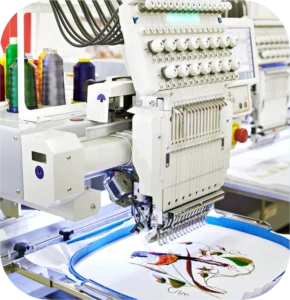
It is the most long-lasting decoration option, especially for uniforms and highly decorative products. This also provides a premium look and pop-up effects with a thread feel.
Most suitable for
Embroidery is most suitable when adding a touch of elegance, personalisation, or branding to fabric objects. It is often used to design apparel, accessories, home décor, and promotional items. Embroidery may be done on textiles like cotton, denim, silk, and leather.
Embroidery can be widely used for thicker fabric structures such as sweatshirts and hoodies with fleece fabric, polo shirts with pique fabric, caps, bags and more.
Pros
- Decorative and tactile appeal: Embroidery adds depth, texture, and character to cloth, resulting in aesthetically stunning designs that can be seen and felt.
- Long-lasting and durable: Embroidered designs are noted for their longevity because the stitching forms a strong link with the cloth, making them resistant to wear and tear.
- Design versatility: Embroidery provides many design options, including elaborate patterns and writing, logos and visual representations.
- Personalisation: Embroidery may be customised to represent personal tastes or to include names, initials, or other information, making it a one-of-a-kind and personalised decoration choice.
- High perceived value: Embroidered goods are frequently linked with exceptional craftsmanship and attention to detail, which adds value and elegance to the completed product.
Cons
- Time-consuming process: Embroidery may be time-consuming, especially when done by hand or for complicated designs requiring patience and talent.
- Design limitations: Highly complex or complicated patterns may be difficult to precisely duplicate through needlework, especially when dealing with fine or fragile textiles.
Printing Cost
The minimum embroidery cost is Rs. 100 for t-shirts, sweatshirts, polos etc.
12. Engraving
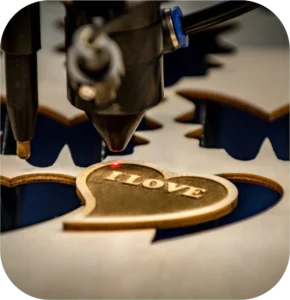
The modern engraving process for merchandise is done using laser machines. Laser engraving is the most aesthetic form of creating a design or a pattern.
Most suitable for
Engraving is often used for decoration, customisation, identification, and branding. This is used to decorate merchandise like belt buckles, chains, bracelets and lifestyle products.
Pros
- Permanent and durable: Engraved marks are long-lasting and fade-resistant, guaranteeing that the design or text remains intact over time.
- High precision and detail: Engraving enables delicate and accurate designs, such as thin lines, small lettering, and complicated patterns, resulting in extremely detailed and visually pleasing marks.
- Material versatility: Engraving may be done on various materials, including metals, wood, glass, plastic, and even stone, allowing for greater creative flexibility.
- Personalisation and Customisation: Engraving allows you to personalise items with names, dates, or special messages, making them one-of-a-kind and meaningful.
- Professional and refined appearance: Engraved marks provide a feeling of quality craftsmanship and care to detail, increasing value and boosting the engraved object’s aesthetic appeal.
Cons
- Irreversibility: Because the engraving is a permanent process, any mistakes or alterations can only be readily undone or changed with substantial effort or harm to the engraved surface.
- Limited material thickness: The thickness of the material limits engraving depth, and fragile materials may not be suitable for deep or intricate engravings.
- Time-consuming process: Engraving may be time-consuming, especially when elaborate or complicated patterns are involved, necessitating patience and great attention to detail.
13. 3D Printing
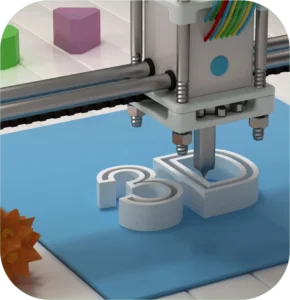
It entails designing an object with computer-aided design (CAD) software, which is then converted into printable instructions for a 3D printer. The printer then constructs the thing layer by layer, carefully adding material where required.
Most suitable for
3D printing is ideal for creating intricate geometries and unique items. 3D printing is used in a variety of industries and applications.
It is used in product development, bespoke manufacturing, architectural modelling, educational settings, and even sculpture production.
Pros
- Design freedom: It provides unmatched creative flexibility, allowing for the creation of inventive and one-of-a-kind forms.
- Rapid prototyping: Rapid prototyping is commonly utilised in 3D printing, allowing designers and engineers to swiftly prototype and test their ideas before going on to mass manufacturing.
- Customisation and personalisation: Because each item can be readily adjusted and adapted to specific requirements or individual tastes, 3D printing allows for object customisation and personalisation.
- Reduced waste: It just utilises the required material, decreasing waste and environmental effects.
Cons
- Limited material options: While 3D printing can support a variety of materials, the range of available materials still needs to be expanded when compared to traditional production processes. However, the variety of printed materials continues to grow.
- Print speed and scalability: 3D printing can be slow compared to mass production processes, making it unsuitable for large-scale manufacturing with strict schedule restrictions.
- Surface finish and post-processing: 3D printed products may have visible layer lines or require additional post-processing operations to obtain a desired smooth finish or surface texture, depending on the printing method and materials used.
What is the most popular printing method for t-shirts and fabric?
The most popular printing methods for t-shirts and fabrics are
- Direct-to-Garment printing (DTG)
- Direct-to-Film printing (DTF)
- Sublimation or all-over printing
- Vinyl printing
- Embroidery
- Screen printing
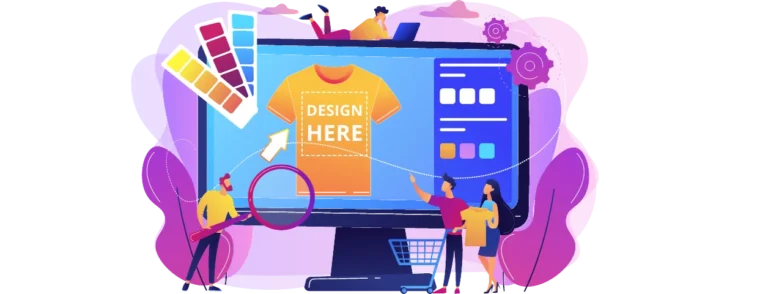
Which type of printing is best on fabric?
All-over printing using sublimation technology is the type of printing best on fabrics. All-over printing technology is a method of printing a pattern across the whole surface of a fabric.
The design is printed on a flat fabric panel before being cut and sewn into the final garment shape using sophisticated equipment and procedures. This technology enables bright, intricate designs to be stretched smoothly from edge to edge over the textile surface.
How Qikink helps you start your printing on- Dropshipping business in India?
Qikink is free to use, and you can get started in just 5 easy steps.
Step 1: Create your account with Qikink and connect your online store.
Step 2: Create mockups with your designs.
Step 3: Set your pricing and list the products on your website.
Step 4: Promote your products online to generate traffic.
Step 5: When a customer places an order on your website, the order gets automatically placed in Qikink. Qikink prints, packs and ships your order to your customer.
Qikink has empowered 7000+ entrepreneurs to run their print-on-demand businesses successfully.
Qikink handles all your printing and shipping needs while you focus on promoting your store and creating designs.
Read more
1. Starting Your Print-On-Demand Custom-Made T-Shirt Business
2. 15 Best T Shirt Design Resources to Create & Sell T Shirts Online
3. From Design to Sale: Creating and Selling Custom Canvas Prints
4. 10 Tips To Create Great Print On Demand Designs For Your Online Store
5. Top 11 T-Shirt Mockup Resources for Every Designer’s Toolkit
Frequently Asked Questions
How does digital printing differ from traditional offset printing, and when should each be employed?
Digital printing differs from traditional offset printing in that it doesn’t require printing plates and is more cost-effective for smaller printing runs. Offset printing is more suitable for large production runs. The choice between digital and offset printing depends on the quantity of prints, turnaround time, and desired print quality.
What advantages does screen printing offer for customizable merchandise in e-commerce?
The screen printing technique is ideal for customizable merchandise in e-commerce. It provides excellent durability vibrant colors, and allows printing on a wide range of materials, including flat or slightly curved surfaces. It is cost-effective for large production runs of the same design.
Are there specialized printing methods for promotional products and branded merchandise?
Yes, there are specialized printing methods for promotional products and branded merchandise, such as vinyl printing, laser engraving, and embroidery.
How can businesses choose the most suitable printing technique based on their product range and customer preferences?
To choose the most suitable printing technique, businesses should consider the type of material, design complexity, print quality, quantity of prints, turnaround time, and cost per unit.
What are the cost considerations associated with different printing techniques for online businesses?
The cost considerations for different printing techniques include setup, labor, material, and shipping costs. The overall cost per unit should be, at most, the product’s selling price.
With over 6+ years of experience in the industry, Ayushi excels in building strong customer relationships and guiding clients toward growth as a Brand Partnership Manager. She enjoys sharing her experience in her content.
